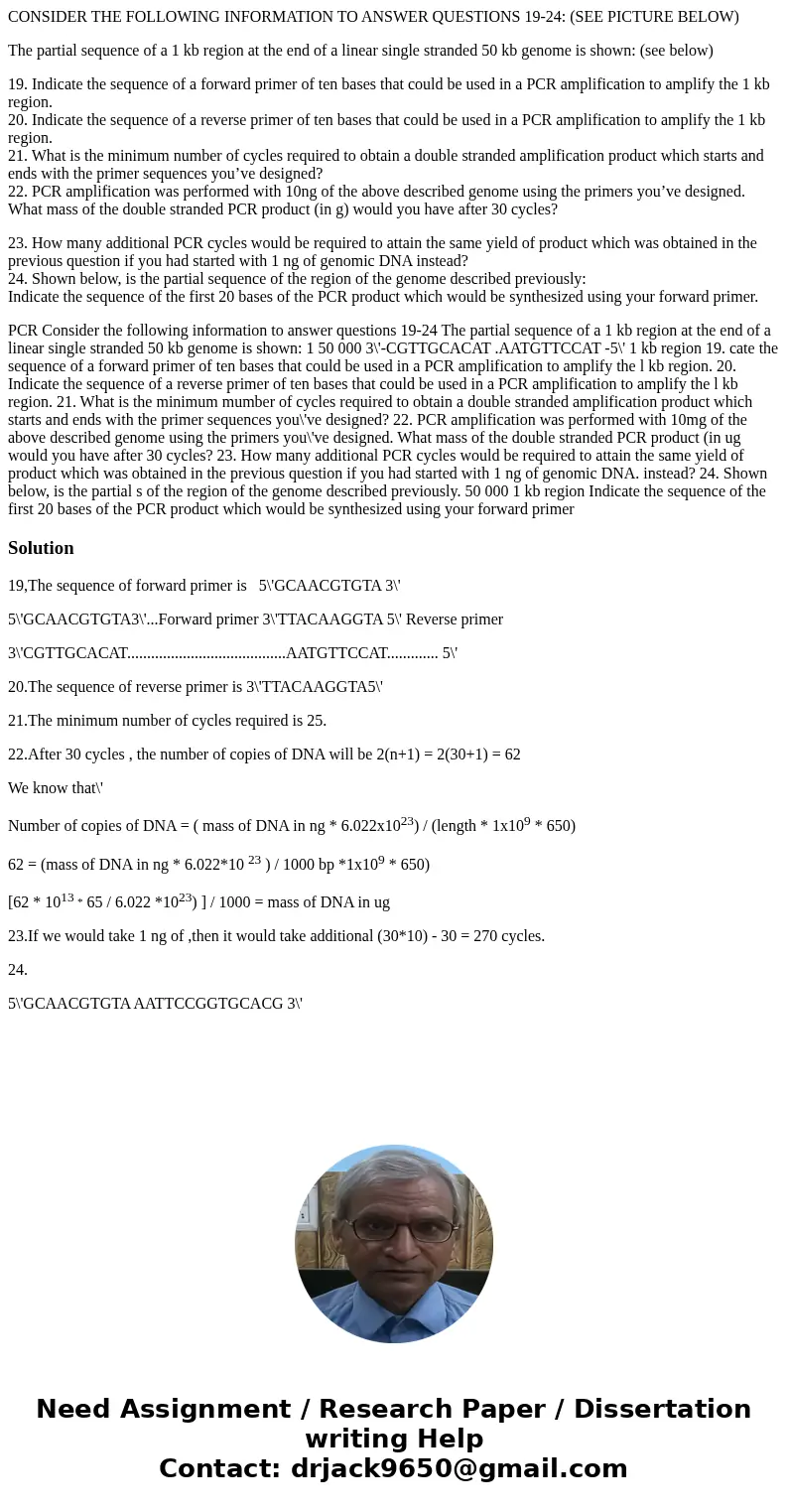CONSIDER THE FOLLOWING INFORMATION TO ANSWER QUESTIONS 1924
CONSIDER THE FOLLOWING INFORMATION TO ANSWER QUESTIONS 19-24: (SEE PICTURE BELOW)
The partial sequence of a 1 kb region at the end of a linear single stranded 50 kb genome is shown: (see below)
19. Indicate the sequence of a forward primer of ten bases that could be used in a PCR amplification to amplify the 1 kb region.
20. Indicate the sequence of a reverse primer of ten bases that could be used in a PCR amplification to amplify the 1 kb region.
21. What is the minimum number of cycles required to obtain a double stranded amplification product which starts and ends with the primer sequences you’ve designed?
22. PCR amplification was performed with 10ng of the above described genome using the primers you’ve designed. What mass of the double stranded PCR product (in g) would you have after 30 cycles?
23. How many additional PCR cycles would be required to attain the same yield of product which was obtained in the previous question if you had started with 1 ng of genomic DNA instead?
24. Shown below, is the partial sequence of the region of the genome described previously:
Indicate the sequence of the first 20 bases of the PCR product which would be synthesized using your forward primer.
Solution
19,The sequence of forward primer is 5\'GCAACGTGTA 3\'
5\'GCAACGTGTA3\'...Forward primer 3\'TTACAAGGTA 5\' Reverse primer
3\'CGTTGCACAT........................................AATGTTCCAT............. 5\'
20.The sequence of reverse primer is 3\'TTACAAGGTA5\'
21.The minimum number of cycles required is 25.
22.After 30 cycles , the number of copies of DNA will be 2(n+1) = 2(30+1) = 62
We know that\'
Number of copies of DNA = ( mass of DNA in ng * 6.022x1023) / (length * 1x109 * 650)
62 = (mass of DNA in ng * 6.022*10 23 ) / 1000 bp *1x109 * 650)
[62 * 1013 * 65 / 6.022 *1023) ] / 1000 = mass of DNA in ug
23.If we would take 1 ng of ,then it would take additional (30*10) - 30 = 270 cycles.
24.
5\'GCAACGTGTA AATTCCGGTGCACG 3\'

 Homework Sourse
Homework Sourse